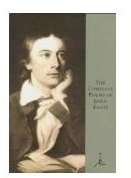John Keats Poetry Analysis: "La Belle Dame Sans Merci"
I received this letter the other day from an old classmate:
Dear Trent,
You may not remember me, but I was your high school classmate. You picked on me incessantly, referring to me as a nerd. While you were taking four years of French, I was learning about computers. One day your French class came over and pelted the computer class with apples (I’ve hated them ever since). I just want you to know, I’ve made billions of dollars with computers. What has your French class done for you?
Sincerely,
Bill
Here was my response:
Dear Bill,
French has opened up gates of learning for me: for example, I understand the title to this John Keats poem, “La Belle Dame Sans Merci” and am able to write a John Keats poetry analysis or as you fancy computer geeks might call it, a literary analysis.
Sincerely,
Trent
An Analysis of the Title
“La Belle Dame Sans Merci” translates as “The Beautiful Woman without Mercy.” You probably don’t need to take French for five years to figure that out. I did take French for five years. I also took several Literature courses. I read many Arthurian romances. Many were written in French, Le Morte D’Arthur being the most famous. Keats’ choice to create a French title alludes to a genre of literature in which knights and damsels in distress are commonplace.
Observations and Conclusions
For a step-by-step rundown of how to do a John Keats Literary Analysis (or any literary analysis), check out the introduction to my analysis of “The Road Not Taken.”
- Rhyme scheme: xaxa - it follows a common pattern for quatrains.
- Meter: The first three lines of each stanza are written in iambic tetrameter. The last line is iambic duometer, or a 5 syllable variation. The shortened last line of each stanza marks an abrupt change in rhythm, focusing the reader’s attention.
- Alliteration in line 1 “wretched wight”; consonance in line 3, “palely loitering.”
- Stanzas 1-3: The narrator meets a wretched knight in autumn, who is dying: “I see a lily on thy brow / With anguish moist and fever dew / And on thy cheek a fading rose / Fast withereth too” (9-12). The last lines in these stanzas are sad.
- The poem’s speaker switches in stanza 4 as the knight tells his story: he meets a beautiful fairy woman and they swear their love to one another. The last line in stanzas 4-7 are about the fairy woman.
- There is an abrupt change at the end of stanza 8 as the knight dreams a horrible dream “on the cold hill side” (36): he sees “pale warriors, death pale” agonizing with the knight. They have “starved lips” (41). The knight shares their fate as he wanders aimlessly “on the cold hill side” (48).
- Repetition of the world “pale” represents death.
Sample Paragraph
This portion of the John Keats literary analysis of “La Belle Dame Sans Merci” focuses on putting the information together.
Keats’ “La Belle Dame Sans Merci” narrates your basic “enchanted lady from the fairy world snares knight with her female wiles, only to abandon him and make him wander the country side aimlessly” tale. The poem is broken into three sections: in the first section, the narrator describes the “haggard and so woe-begone” (6) knight, whose brow is lily white and whose cheeks’ color fades. Notice the clever pun, “wretched wight” in line 5. It becomes evident in the third section what the knight’s fate is, for he dreams of “pale kings, and princes too / Pale warriors, death pale were they all” (37-38). It is apparent the same thing happens to the knight, “la belle dame sans merci” has ensnared him as described in section 2, that happened to them.
What did you think of the poem?
This post is part of the series: John Keats Poetry Study Guide
John Keats is good at writing poetry.
- An Analysis of Ode on a Grecian Urn by John Keats
- Understanding La Belle Dame Sans Merci by John Keats
- Interpreting the Odes of John Keats
- Analysis of Poems by John Keats: “To Solitude” and “Bright Star”
- An Analysis of “On First Looking into Chapman’s Homer”
